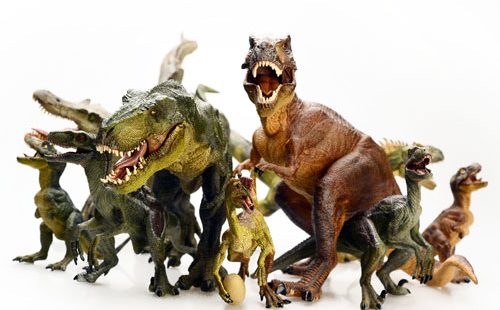Dinosaur
They may have roamed the earth millions of years ago, but the word dinosaur has been with us for a relatively short period of time. In 1841, the British paleontologist Sir Richard Owen proposed the name Dinosauria, derived from Greek words deinos meaning “terrible; fearfully great” and saûros meaning “lizard,” to refer to a suborder of extinct reptiles, some of which are the largest known land animals to ever inhabit our planet. In the 1950s, dinosaur picked up the figurative sense of “something that is anachronistically outmoded, or unable to adapt to change.”



















